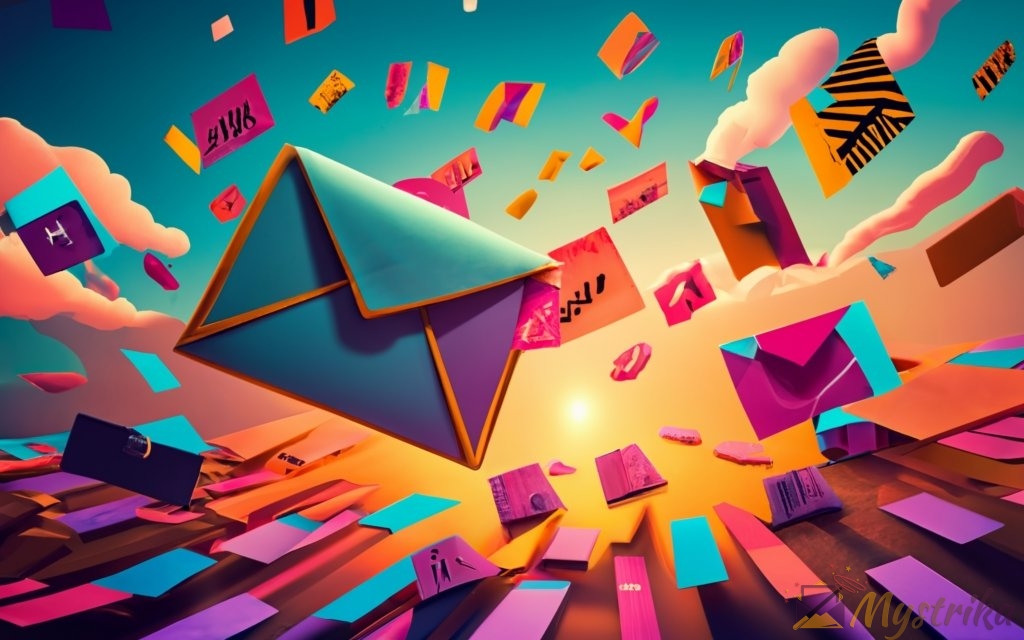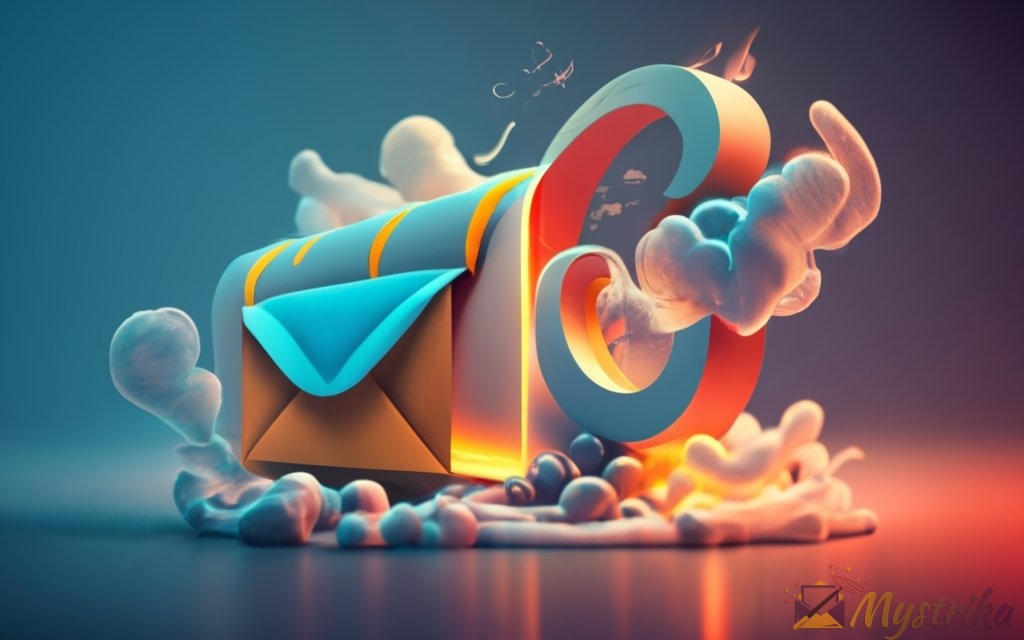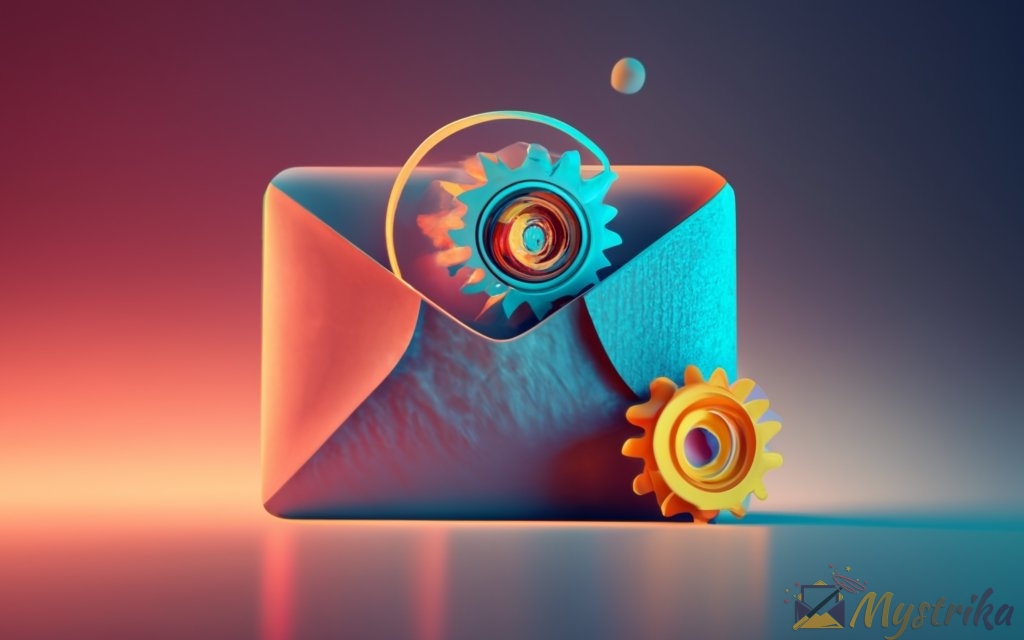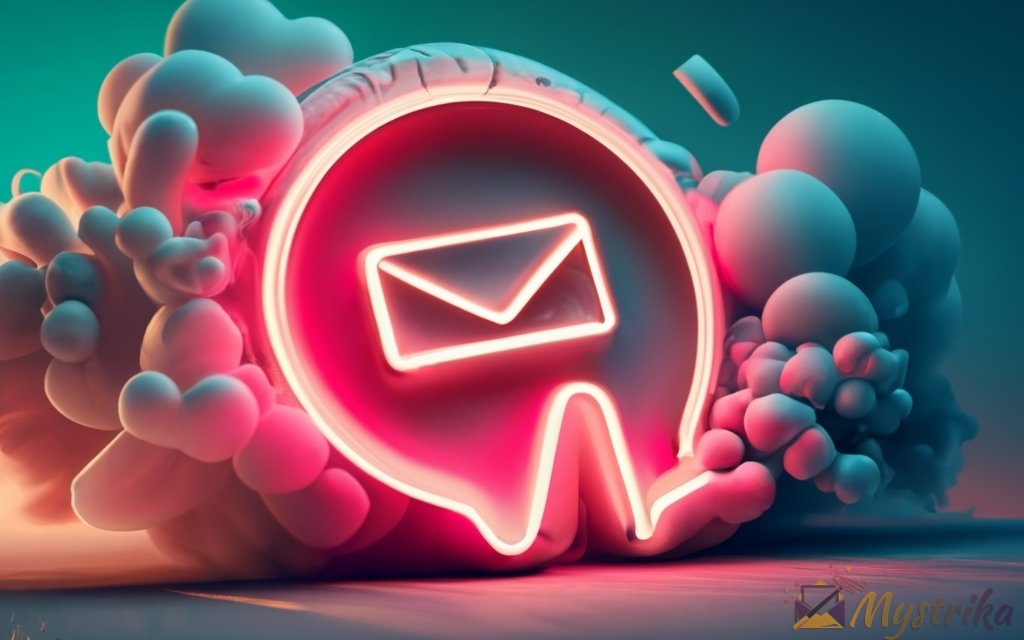Tired of sending one-off blasts and hoping for conversions?
Email marketing funnels provide a framework for nurturing leads through automated, personalized campaigns tailored to each lifecycle stage.
In this complete guide, we’ll explore what email funnels are, real examples, how to create one, metrics to track, and tips to optimize performance.
With the right funnel, you can turn complete strangers into loyal brand advocates who buy again and again. Let’s dive in!
What is an Email Marketing Funnel?
An email marketing funnel is a structured framework that guides leads through each stage of the customer journey in a strategic, automated way. The goal of an email funnel is to nurture leads by providing personalized value at each stage, building trust and eventually converting them into customers.
Definition and Purpose
An email funnel represents the customer’s path from initial awareness of a product or service to becoming a paying customer. As the name suggests, it is shaped like a funnel, with each stage filtering out leads that are not ready to convert.
The goal of an email funnel is to:
- Generate awareness about a brand, product or service
- Capture leads by offering something of value like a free guide
- Nurture leads by building relationships and trust
- Convert leads into paying customers
- Retain customers through ongoing communication
By automating personalized emails for each stage, marketers can scale their sales process and boost conversions. According to Statista, email marketing has a median ROI of $42 for every $1 spent. This makes it one of the most powerful sales channels for lead nurturing.
Stages of an Email Funnel
While the exact stages may vary, most email funnels include 5 core stages:
1. Awareness
This first touchpoint is about developing brand awareness and getting the prospect’s attention. Typical awareness tactics include:
- Content marketing through blogs and social media
- SEO to rank for relevant keywords
- Paid ads to reach a wider audience
Giveaways like ebooks and webinars work well to capture leads at this stage.
2. Interest
At this stage, leads have opted in and are open to learning more. Emails should focus on:
- Providing valuable educational content
- Establishing thought leadership and authority
- Warming up leads for future sales conversations
For example, an accounting software company could send tips for managing finances or tax guides at this stage.
3. Consideration
Leads are now evaluating different solutions and vendors. Emails should highlight:
- Product benefits and features
- Case studies showing real results
- Testimonials and social proof
This builds credibility and positions your solution as the best choice.
4. Conversion
At this sales-focused stage, leads are ready to make a purchase decision. Tactics include:
- Promotional emails with discounts or incentives
- Scarcity and urgency to motivate action
- Clear CTAs leading to checkout pages
Remove any friction in the checkout process to maximize conversions.
5. Retention
Post-purchase, the goal is to retain customers. Use:
- Automated onboarding sequences
- Surveys to monitor satisfaction
- Loyalty programs and special offers
Ongoing communication and stellar customer service increase brand loyalty.
Visual Representation as a Funnel
Visually, an email funnel looks like a regular funnel. The wide opening represents newly captured leads, while the narrow bottom represents customers who completed purchases.
As leads progress down the funnel, those who are not ready to convert will leak out of the funnel. Effective email campaigns minimize leaks by providing relevant value at each stage.
The top of the funnel represents building awareness with a large pool of potential prospects. As leads progress down the funnel, they are nurtured into customers ready to make a purchase.
Email marketing platforms like Mailchimp and Sendinblue make it easy to set up automated funnels with targeted emails for each stage. Advanced segmentation and tracking provide insight into which emails have the most impact.
This strategic approach is key to guiding cold leads into becoming brand advocates and repeat customers. In the next section, we’ll explore why email funnels are so critical for modern marketing.

Why Are Email Funnels Important?
Email marketing funnels provide a framework to systematically guide leads through the sales process in a personalized way. This strategic approach delivers tremendous value, including:
- Maintained engagement throughout the customer lifecycle
- Increased conversions by nurturing leads
- Improved customer retention through ongoing communication
- The ability to optimize campaigns based on data
Let’s explore these benefits in more detail.
Maintain Engagement Through the Customer Journey
Imagine you’re interested in a SaaS platform and subscribe to their newsletter. If you immediately received a sales pitch, you’d likely disengage quickly.
With an email funnel, the brand can nurture you by providing value like educational content first. This establishes trust and keeps you engaged throughout the awareness, consideration and decision stages.
According to MarketingSherpa, targeted lead nurturing boosts conversions by over 10%. Email funnels enable this by delivering personalized value during each stage of the customer journey.
Without a structured funnel, it’s easy for leads to slip through the cracks. Email automation ensures customers receive timely, relevant messaging based on their interests and actions.
Personalize Communication at Each Stage
Email marketing platforms make it easy to segment contacts and tailor content accordingly. For example, first-time prospects may receive general product awareness emails.
But existing customers can be sent VIP promotions, educational content, surveys, and more. Personalized communication is far more effective at converting and retaining customers.
According to Campaign Monitor, personalized subject lines have 26% higher open rates on average. With an email funnel, you can take personalization even further by customizing content in each stage.
Increase Conversions By Nurturing Leads
Think of leads like seeds – they require careful nurturing to grow. With a structured sequence of emails, you can gradually build relationships with cold leads to turn them into customers.
For example, an ecommerce store can use their funnel to:
Awareness: Attract potential customers by giving away coupon codes or ebooks related to their interests.
Interest: Send email courses on styling tips or new fashion trends.
Consideration: Share customer testimonials and case studies.
Conversion: Offer limited-time sales or discounts.
Retention: Send post-purchase surveys and personalized recommendations.
This nurturing and relevant communication converts significantly better than intermittent sales pitches. Email funnel automation allows scaling this process across thousands of leads.
According to Act-On Software, nurtured leads make 47% larger purchases compared to non-nurtured leads. The stats speak for themselves!
Retain Customers Longer Through Ongoing Communication
The customer relationship doesn’t end after a purchase is made. In fact, existing customers spend 67% more compared to new customers according to Forbes.
This is where the retention stage of the funnel comes in. Post-purchase communication like:
- Surveys to monitor satisfaction
- Education on product features
- Loyalty rewards and promotions
…can dramatically increase customer lifetime value. Email funnels enable automating tailored nurturing sequences that continue well beyond the initial sale.
According to Return Path, brands have a 65% chance of re-engaging customers through cart abandonment emails. Retention focused funnels leverage these kinds of post-purchase sequences to maximize repeat sales.
Optimize Campaigns Based on Data
Perhaps the most powerful benefit of email funnels is the ability to optimize based on hard data. When you track metrics like:
- Open rates
- Clickthrough rates
- Bounce rates
- Unsubscribe rates
- Sales conversions
… across the entire funnel, you gain incredibly valuable insight about what works and what doesn’t. This allows refining each email, subject line and CTA to boost engagement.
You can also perform A/B tests on various components and automate winning variants across campaigns. According to HubSpot, 63% of digital marketers use A/B testing to improve email campaign performance.
Data-driven optimization is the key to ridiculously high email ROI across each stage of the funnel. No more guessing – let the numbers guide your decisions.
In summary, adopting a structured email funnel brings game-changing benefits for customer acquisition and retention. The automation, personalization and optimization capabilities are simply unmatched by other channels.
Now let’s look at 8 types of emails commonly used across the funnel stages.

8 Types of Emails in a Sales Funnel
Well-designed email funnels utilize different types of emails tailored to each stage of the customer journey. By sending the right message at the right time, marketers can nurture leads effectively and drive conversions.
Let’s explore the 8 most common email types within a sales funnel and how to use them strategically.
Awareness Emails
These introductory emails aim to grab the prospect’s attention and introduce your brand, product or service. Examples include:
Welcome Emails: Thank new subscribers for joining your list and share exciting content or offers. E.g. “Thanks for subscribing! Here’s a 10% off coupon for your first purchase.”
Lead Magnets: Offer free, valuable resources like ebooks, tip sheets or webinars in exchange for an email address to build your list.
Content Upgrades: Provide access to premium content when prospects sign up or perform a desired action.
Newsletters: Send regular newsletters that provide educational content without a hard sales pitch.
The goal is to capture contacts and move them to the next stage by offering value. Keep emails concise, personal and relevant.
Interest/Nurture Emails
Now that leads are subscribed, the focus shifts to engagement and education. Typical interest-building emails:
Tutorials: Teach subscribers about your product with step-by-step walkthroughs and guides. E.g. Setting up your new software.
Industry Insights: Establish domain authority by sharing trends, analysis and best practices via blogs, ebooks etc.
Product Updates: Notify customers about new features, releases and updates.
Quizzes: Interactive quizzes related to your niche keep subscribers engaged and learning.
Newsletters: Continue sending informative newsletters and content your audience cares about.
The goal here is to nurture leads by positioning your brand as a trusted advisor. Avoid selling and focus on value.
Consideration Emails
Now that awareness and interest is established, you can start showcasing your product as an ideal solution. Tactics include:
Case Studies: Share success stories and results from existing customers.
Testimonials: Social proof like customer reviews builds credibility.
Product Demos: Let subscribers experience your product through free trials, walkthroughs etc.
Comparison Charts: Show how you stack against competitors and why you’re the better choice.
FAQs: Answer common questions, concerns and objections to build trust.
The objective is to educate leads and prove your value proposition. Give them enough information and social proof to move further down the funnel.
Conversion Emails
At this final sales stage, prospects are ready to become customers. Some conversion boosting emails:
Promotions: Offer first-time discounts, free shipping, bundled packages or other incentives to motivate purchases.
Scarcity: Urgency tactics like limited-time sales apply the pressure to convert leads into buyers.
Abandoned Carts: Remind customers about items left in their cart and provide incentives to complete the purchase.
Order Confirmation: Transactional emails that confirm purchase details provide reassurance.
Request for Reviews: Ask satisfied customers to leave positive reviews on your website or Google to build credibility.
The singular goal here is to convert leads into paying customers. Minimize friction in the checkout process and follow up post-purchase.
Retention Emails
The customer lifecycle doesn’t end after a purchase – retention is critical for recurring revenue. Use emails to:
Onboarding: Welcome new users, educate them about product features and set expectations.
Support: Follow up with customers who had issues to ensure they have a positive experience.
Surveys: Learn how you can improve and collect feedback through surveys.
Loyalty Programs: Special rewards, points or discounts for loyal repeat customers.
Re-engagement: Win back inactive customers with personalized offers and content.
Upsells/Cross-sells: Suggest relevant products and upgrades to existing customers.
The focus is on maximizing customer lifetime value and preventing churn. Ongoing nurturing is the key.
Upsell Emails
Upselling means selling enhanced versions or premium features to existing customers. Tactics include:
New Product Releases: Notify customers when you release improved or expanded offerings they might be interested in.
Expiring Discounts: Limited-time special offers incentivize customers to upgrade and buy more.
Educing Benefits: Remind customers how upgrading can help them achieve more of the desired outcome.
Usage-Based: If customers are exceeding current plan limits, reach out to upsell larger packages.
Personalization: Use purchase history and behavior data to recommend relevant upsells.
The purpose is driving higher-value purchases from happy customers who find your product useful.
Cross-sell Emails
Cross-selling promotes complementary products to current customers. For example:
Abandoned Browse: Follow up when a customer views a related product but doesn’t purchase.
New Arrivals: Notify customers when you release complementary products or categories they may like based on past purchases.
Bundled Packages: Offer discounted bundles that provide an incentive to purchase additional products.
Personalization: Use data and segmentation to recommend relevant products individual customers are likely to purchase together.
Past Purchase History: Remind customers about complementary products purchased by other customers who bought what they did.
This expands average order value by selling additional products to existing happy customers.
Re-engagement Emails
These emails try to reactivate customers who have gone cold or inactive. Examples include:
Win-back Offers: Special discounts or personalized promotions aimed at getting inactive users to purchase again.
Educationals: Provide useful content and resources to remind inactive users about your value proposition.
Surveys: Asking about why customers have gone inactive can provide insights to improve.
Progress Trackers: Show inactive users how much they used your product in the past and what they are missing out on.
Testimonials: Success stories from other resurrected users can inspire reactivation.
The goal is to win back lost customers and reinforce your product’s value.
In short
- Map relevant email types to each stage of your sales funnel.
- Ensure messaging aligns with the goal of each stage.
- Use data to continuously optimize content and timing.
- Automate tailored email sequences for better results.
Strategically combining these email types based on the funnel stage results in higher conversions, lower unsubscribes and happier customers!
Now let’s look at some real-world examples of email funnels.

Real-World Email Funnel Examples
Seeing email funnel examples from real companies can showcase creative strategies for each stage. Let’s explore examples from the awareness, interest and conversion stages.
Lead Magnet Example for Awareness Stage
Here is an example of an effective lead magnet from HubSpot to generate new contacts:
Subject: Your Shortcut to Email Marketing Awesomeness 🚀
Hey [Prospect’s Name],
Ready to elevate your email game without the headache? We’ve got the golden ticket to make it happen.
🔥 Introducing: The Ultimate Email Marketing Checklist 🔥
Over 12,000 marketers have already grabbed theirs, and here’s why you should too:
✅ Say goodbye to email chaos with our step-by-step checklist.
✅ Unlock insider tips for click-worthy subject lines.
✅ Nail the timing for maximum opens and conversions.
Get your hands on this game-changing template now and watch your email strategy soar. Simply hit “Get the Template” below, and voila!
[Get the Template]
Join the ranks of savvy marketers who’ve turned their inbox into a conversion machine. Don’t miss out—grab your checklist now!
Cheers to your email success!
[Your Name]
[Your Title]
[Your Contact Information]
Key highlights:
- The CTA clearly summarizes that it’s a free email marketing checklist template available in exchange for an email address. This provides value upfront.
- Social proof in the form of existing downloads (over 12,000) builds credibility and scarcity by suggesting high demand.
- The lead magnet directly ties to the brand’s core offering of email marketing resources.
- A brief description summarizes what the checklist covers to entice sign-ups.
- The email field has a clear call-to-action: “Get the Template”.
This lead magnet delivers high value, establishes authority, and collects contacts in the awareness stage.
Educational Content Example for Interest Stage
Here Mailchimp sends an informational newsletter with e-commerce tips:
Subject: Boost Your Sales with These Pro Tips 🚀
Hey [Subscriber’s Name],
Hope your day is as fantastic as finding money in your jeans pocket! 🌟 Ready to turn that good mood into even better sales?
In this edition of our e-commerce playbook, we’re dishing out 5 proven tips to turbocharge your store’s success. 🛍️✨
🔥 Hot Tip #1: [Icon of a rocket] Launch Irresistible Promos: Discover the science behind promotions that’ll have customers hitting that ‘Buy Now’ button faster than you can say “discount.”
📈 Pro Move #2: [Icon of a graph trending up] Ride the Data Wave: Unleash the power of analytics to tweak your strategy. Spoiler alert: Numbers can be your BFF in boosting sales!
🌐 Global Success #3: [Icon of a world map] Expand Your Reach: We spill the beans on going global without losing your sleep or sanity. It’s like world domination but cozier.
💡 Bright Idea #4: [Icon of a lightbulb] Illuminate Your Product Pages: Ever wondered why some product pages shine brighter? We’ve got the hacks to make yours the North Star of e-commerce.
🚀 Blastoff Bonus #5: [Icon of a spaceship] Automate to Elevate: Say farewell to tedious tasks. Automation isn’t just for robots; it’s your secret weapon for scaling up effortlessly.
Meet the brains behind the brilliance:
[Author’s Name], E-commerce Guru
These tips aren’t just a shot in the dark; they’re your roadmap to e-commerce glory. Dive in, apply, and get ready to witness the magic!
Happy selling,
The Mailchimp Team 💌
Key aspects:
- The subject line promises actionable e-commerce tips, attracting the target audience.
- The preview text expands on the value readers will get – 5 proven tips to increase sales.
- The header reinforces the educational nature – “Pro Tips for Your Store”.
- Bold icons help quickly scan for key tips at a glance.
- A clear author byline builds credibility as advice from an expert.
- The tone is conversational and friendly while sharing data-backed advice.
- The goal is to establish authority and nurture leads, not make a hard sell.
This educational format nurtures leads in the interest stage by delivering value.
Promotional Email Example for Conversion Stage
Here’s a promotional email from lululemon incentivizing purchase decisions:
Subject: Hurry In! Your Exclusive 20% Discount Awaits 🏃♀️
Preview Text: Limited Quantities! Your Lululemon Discount Inside.
Hey [Subscriber’s Name],
We know life is busy, but so is this offer! ⏰ Dive into our sale and enjoy an exclusive 20% off on all those pieces you’ve been eyeing. Trust us, FOMO is real, and this deal is too good to miss!
🛍️ Shop Now and Save 20% on Every Sale Item 🛍️
Why now? Because your wardrobe deserves a refresh, and we believe in treating yourself. Plus, with limited quantities, it’s a race against time and fashionistas. Don’t let this exclusive offer slip through your fingers.
Your Discount Code: LULU20MAGIC
Here’s why this is a no-brainer:
✨ 20% off – Hello, instant savings!
✨ Limited quantities – Be the first to snag the best styles!
✨ Free shipping – Because you’re a VIP in our world.
Ready to elevate your active lifestyle? Hit “Shop Now,” apply your code, and let the shopping therapy begin!
[Shop Now Button]
P.S. Picture yourself in these outfits. Now make it a reality! 🌟
Move swiftly, the clock is ticking!
Cheers to savings and style,
The Lululemon Team
Analysis:
- The subject line creates urgency with a time-sensitive discount offer that stands out.
- The preview text builds excitement and scarcity by mentioning limited quantities.
- The header reinforces the offer – 20% off all sale items.
- Clear CTA buttons make it easy to “Shop Now” along with visible savings.
- The discount code is prominently highlighted along with terms for easy access during checkout.
- Placing the offer front and center limits distractions and keeps the focus on conversion.
- Relatable lifestyle imagery builds an emotional connection.
This email converts consideration stage users by clearly showcasing the promotional offer. The time sensitivity adds urgency to complete the purchase.
In nutshell
- Lead magnets attract new contacts by exchanging value.
- Educational content nurtures leads by building authority.
- Promotions incentivize purchase decisions and increase conversions.
- Maintain a customer-centric approach throughout funnel communications.
Now that we’ve seen email funnel examples in action, let’s look at how to create an effective funnel step-by-step.

How to Create an Effective Email Funnel
Designing a results-driven email funnel takes strategic planning and execution. Follow these steps to implement an automated funnel that nurtures leads and boosts conversions:
Identify Your Audience
Defining your target audience is an essential first step to build buyer personas and customize funnel messaging accordingly.
Gather Customer Data
Leverage existing customer data, surveys, interviews, and market research to identify common demographics, pain points, and motivations.
Create Detailed Buyer Personas
Go beyond basic traits to build rounded profiles. Include details like:
- Job titles
- Goals and challenges
- Common objections
- Preferred content format
Map Out the Buyer’s Journey
Understand the typical path prospects take from awareness to purchase. Document each touchpoint to identify the right funnel stage for delivering value.
Conduct First-Party Research
directly interacting with your audience provides invaluable insights:
- Monitor sales calls and live chats to identify frequently asked questions.
- Pay attention to the language real prospects use to describe their challenges.
- Survey subscribers and customers to surface their preferences.
This upfront research ensures your funnel messaging aligns with what your audience actually cares about.
Map Out the Customer Journey
Next, map out the typical journey a prospect takes from stranger to repeat customer.
Common Stages Include:
- Awareness: Learning about your brand
- Interest: Engaging with content
- Consideration: Comparing solutions
- Decision: Purchasing
- Retention: Becoming a repeat customer
Document Each Stage
Map out the customer experience during each stage:
- What content and messaging would attract their attention?
- How can you showcase value and build authority?
- Where could roadblocks arise?
- How does the post-purchase experience impact retention?
Optimize Touchpoints
Identify the optimal communication channels and strategies for guiding customers through each stage.
This mapping gives a blueprint for structuring funnel content. Align messaging to where prospects are in their journey to guide them smoothly forward.
Set Up Lead Magnet to Capture Contacts
Your funnel can’t nurture prospects you don’t have. Landing pages and lead magnets help attract and capture new contacts.
Create Valuable Lead Magnets
Offer free resources like ebooks, kits, and calculators that provide real value in exchange for an email address.
Promote Your Lead Magnet
Increase reach through channels like:
- Paid ads
- Blog posts
- Social media
- SEO
Optimize Landing Pages
Create dedicated landing pages that explain your lead magnet value and make it easy to convert visitors.
Send Automated Follow-Ups
Set up funnels to send a targeted onboarding sequence after lead magnet download.
Nurture sign-ups immediately to turn new prospects into engaged subscribers.
Build Email Flows for Each Stage
Map out the automated email flows you’ll send at each funnel stage.
Awareness: Welcome sequence introduces your brand value. Send newsletter subscriptions, lead magnets, educational content.
Interest: Nurture and engage with tutorials, guides, industry insights, and product update emails.
Consideration: Case studies, demos, comparisons, and reviews build confidence in your solution.
Conversion: Promotions, offers, urgency tactics encourage purchase decisions.
Retention: Onboarding, surveys, re-engagement emails, upsells improve retention.
Timing and Triggers
Send emails when most relevant based on lead behavior:
- Set delays after specific actions like sign-ups or purchases.
- Trigger responses to events like abandoned carts.
- Schedule recurring broadcasts like newsletters.
Well-timed, strategic email sequences tailored to each funnel stage boost conversions.
Send Follow-Up Sequence with Personalization
Follow-up emails reinforce your message and establish regular communication with subscribers.
Onboarding Sequence
Welcome new subscribers, share valuable content, and slowly introduce your brand.
Educational Content
Build authority in your space by providing useful, non-promotional knowledge.
Abandoned Cart
Recover lost sales through special discounts and offers if users don’t complete their purchase.
Webinar Sign-Up
Follow-up on registrations with calendar invites and content previews.
Comment Reply
Continue engaging visitors who comment on your blog and social media.
Customer Win-Back
Special offers and perks for customers who haven’t purchased recently.
Personalize follow-up content based on interests, purchase history, and behaviors for better results.
Use Automation to Convert and Retain
Marketing automation software streamlines running advanced email funnels at scale.
Features to Look For:
- Visual campaign builder with drag-and-drop ease
- Segment contacts and personalize content
- Flexible automations based on behavior, time delays, events
- A/B testing for subject lines, content, layouts, timing
- Email analytics and heat mapping
- Integrations with CRM, ecommerce, and email platforms
With the right automation tool, you can set up entire sequences and flows with a few clicks.
Common use cases include:
- Welcome new subscribers with onboarding content
- Wish customers on their birthday or anniversary
- Remind customers about abandoned cart items
- Upsell based on purchase history and usage
- Re-engage inactive contacts with special offers
Advanced automation takes your email funnel game to the next level for hyper-targeted messaging.
In short
- Identify your target audience and map their journey.
- Offer a lead magnet to attract subscriber sign-ups.
- Build tailored email flows for each funnel stage.
- Use timely follow-up sequences with personalization.
- Leverage marketing automation to scale your funnel.
By guiding your audience every step of the way, you maximize conversions while delivering an excellent customer experience!
Next, let’s explore key metrics to track funnel performance.

Email Funnel Metrics to Track
To optimize the performance of your email funnel, you need to monitor key metrics across each stage. Here are the top 5 metrics to track:
Open Rates
The open rate shows the percentage of subscribers who opened your email campaign.
How to calculate:
Open rate = (Unique opens / Total delivered) x 100
For example, if you sent a campaign to 1000 contacts and 200 unique people opened it, the open rate is 20%.
Benchmark: The average open rate across industries is 20-25% according to Mailchimp.
How to improve:
- Write compelling subject lines that create curiosity.
- Ensure your emails are mobile-friendly and preview correctly across devices.
- Test different subject lines, preheaders and send times.
- Segment your list based on past engagement and only email highly engaged subscribers.
- Regularly remove inactive contacts through list hygiene.
Click-Through Rates
Click-through rate or CTR measures the percentage of recipients who clicked on links within your email.
How to calculate:
CTR = (Unique clicks / Total delivered) x 100
For example, if your campaign was delivered to 2000 people and 100 people clicked on links within the email, the CTR is 5%.
Benchmarks: Average CTRs range between 2-3% according to Mailchimp.
How to improve:
- Place your most important CTA above the fold to increase visibility.
- Write compelling copy around your links that convey value.
- Make links descriptive so recipients know what content they lead to.
- Test different offers, promotions and link placement to determine what resonates best with your audience.
- Only link to high-quality content and landing pages that deliver on your email promise.
Conversion Rates
Conversion rate is the percentage of recipients who completed your desired goal or action.
How to calculate:
Conversion rate = (Total conversions / Clicks) x 100
For example, if you sent a promotion to 1000 contacts and 100 people clicked the link, resulting in 10 sales, your conversion rate is 10%.
Benchmarks: According to WordStream, average conversion rates range between 3-5% depending on your industry.
How to improve:
- Ensure your CTA clearly explains the next step you want readers to take.
- Reduce friction during checkout with guest checkouts, saved payment methods etc.
- Follow up with abandoned cart emails to recover lost sales opportunities.
- Make confirmation emails reassuring and provide support channels.
- Show social proof elements like testimonials to increase trust and conversions.
Unsubscribe Rates
Your unsubscribe rate shows how many recipients opted out from your email list.
How to calculate:
Unsubscribe rate = (Unsubscribes / Total delivered) x 100
For example, if you emailed 5000 contacts and 50 unsubscribed, your unsubscribe rate is 1%.
Benchmarks: The average unsubscribe rate is around 0.1% according to Mailchimp. For sensitive industries like politics, it may be higher.
How to improve:
- Only email engaged subscribers who regularly open and click your emails.
- Add an unsubscribe link in your emails so users can easily opt-out.
- Ensure you have consent before adding any contacts. Never purchase or scrape email lists.
- Avoid spam trigger words, over-the-top promotions, or emailing too frequently.
- Provide subscribers with content and offers tailored to their interests based on past behaviors.
Bounce Rates
Bounce rate is the percentage of emails that failed to reach recipients due to invalid or unavailable email addresses.
How to calculate:
Bounce rate = (Bounced emails / Total delivered) x 100
For example, if you send an email campaign to 2000 contacts and 100 are bounced, the bounce rate is 5%.
Benchmarks: The average bounce rate is between 2-5% according to Return Path.
How to improve:
- Actively maintain your list by removing inactive, bounced or unsubscribed contacts.
- When you capture new leads, immediately send an email confirmation to verify address validity.
- If your bounce rate spikes, pause your email campaigns and investigate the root cause.
- Set up address verification through your email service provider to detect issues before sending.
- Monitor hard vs soft bounces. Hard bounces signal permanently invalid addresses.
Proactively maintaining list hygiene minimizes wasted sends to invalid addresses and preserves sender reputation.
In nutshell
- Monitor open, CTR, conversion, unsubscribe and bounce rates.
- Use benchmarks to gauge the health of your email program.
- Test and optimize each stage of your funnel based on performance data.
- Prioritize cleaning your list and removing unengaged contacts.
Now that we’ve covered key metrics, let’s explore tips for further optimizing your funnel’s impact.

Tips for Improving Your Email Funnel
Use these proven tips to optimize the impact of your sales funnel emails:
Test Different Email Components
Experiment with various email elements to determine what resonates best with your subscribers.
Subject Lines
Subject lines are the first impression recipients see. A/B test different phrases, emojis, urgency cues, length, etc.
For example, see which converts better:
Subject A: 👋 Here’s a 20% off coupon!
Subject B: Limited-time sale ending soon!
Email Copy
Test how message framing and different offers influence engagement and conversions.
Design Layout
See if a text-heavy or visual layout performs better. Try different placements for copy, images, and CTAs.
Calls-to-Action
Experiment with different CTA wording, colors, sizes, and placements.
For example, which CTA drives more clicks – “Shop Now” or “See Our Products”?
Send Day & Time
Pay attention to when your audience is most engaged and convert that into your default send schedule.
Here’s a sample test matrix:
| Test Variable | Version A | Version B |
| Subject Line | Back to School Sale! 🎒 | 25% off Backpacks 🎒 Limited Time! |
| Banner Image | Backpacks on shelves | Students wearing backpacks |
| CTA Wording | Shop Now | Get Your Backpack |
| Send Day | Monday 10 AM | Tuesday 3 PM |
Analyze performance data to determine what resonates best with subscribers. Then implement the highest converting variants across your funnel.
Pay Attention to Engagement Metrics
Use email analytics to identify bottlenecks in your funnel and growth opportunities.
Low Open Rates?
Refine your subject lines, preheaders and send times for better visibility.
Low Click Rates?
Improve copy and content quality around your CTAs.
Low Conversion Rates?
Make it easier for prospects to complete desired actions from your emails.
High Unsubscribe Rates?
Re-evaluate your email content and frequency.
High Bounce Rates?
Clean your list and fix deliverability issues.
Let data guide your optimization efforts for maximum impact.
Clean and Segment Your List
Emailing only engaged subscribers improves all metrics across your funnel.
Remove Invalid Emails
Regularly clean your list to eliminate inactive, unsubscribed and bounced email addresses.
Segment by Engagement
Separate subscribers who regularly open and click from inactive contacts. Email your most engaged users more often.
Personalize Content
Use segmentation to tailor your email content and offers based on interests, demographics, purchase history and more.
Targeted outreach keeps contacts interested, while list hygiene ensures emails reach real inboxes.
Time Emails Based on Past Performance
Use email analytics to determine optimal send times for each campaign.
Test Different Days & Times
See when your target audience is most likely to open, click, and convert.
Tuesday at 3 PM might beat out Friday at 10 AM for some niches.
Vary for Each Funnel Stage
Awareness stage blasts may perform best on Mondays, while promotional emails do better mid-week or on weekends.
Consider Time Zones
If you have an international audience, test how time of day impacts each region’s engagement.
Automate for Maximum Impact
Use marketing automation to schedule emails for each subscriber at their peak engagement time based on past behaviors.
Well-timed emails ensure your message reaches prospects when they are most receptive.
Write Compelling Content for Each Stage
Craft your email content to align with the goal of each funnel stage.
Awareness: Educate
Provide valuable tips and insider knowledge without a sales pitch.
Interest: Solve Problems
Offer step-by-step guides, actionable advice, and resources tailored to common buyer challenges.
Consideration: Summarize Benefits
Explain exactly how your product or service addresses their needs in a straightforward manner.
Conversion: Motivate Action
Use promotions, discounts, and scarcity to incentivize desired behavior. Make it extremely easy to convert.
Retention: Deliver Value
Provide exclusive tools, early access, and special offers so customers gain tangible benefits from their continued loyalty.
Strategic messaging tailored to the funnel stage keeps prospects engaged, educated, and primed for conversion.
In nutshell
- Constantly test and optimize each email component.
- Pay attention to metrics to identify weaknesses.
- Segment and time emails for maximum impact.
- Ensure your content matches the funnel stage goal.
By continually monitoring performance and iterating, you’ll be able to guide leads down the funnel in a highly strategic manner.

Why Use Email Funnels for Marketing?
Email marketing funnels provide a strategic framework to guide prospects from initial awareness to repeat customers. Let’s summarize the key benefits:
Increase Brand Awareness
Email funnels help more people discover your brand by:
- Generating leads through gated content and lead magnets
- Capturing contact details to build your subscriber list
- Engaging new subscribers through onboarding emails and newsletters
- Utilizing promotions and social proof to showcase value
With tailored messaging for each stage, you can efficiently educate prospects about your company, products, and services through email.
According to Omnisend, 80% of marketers say email is core to their business for acquiring new customers.
Nurture Leads with Personalized Content
Email funnels allow nurturing leads with relevant, personalized content including:
- Targeted educational resources
- Segmenting based on demographics, interests, and behaviors
- Sending follow-up sequences when prospects interact with your brand
- Tracking engagement metrics to identify what resonates best
- Optimizing messaging and timing based on open and click-through rates
This tailored, strategic approach builds trust and relationships with prospects – critical for converting leads.
According to Act-On software, nurtured leads make 47% larger purchases than non-nurtured leads.
Drive Conversions by Building Relationships
The tiered structure of email funnels sets up seamless conversion opportunities:
- Lead nurturing establishes you as a trusted resource
- Promotional elements later in the funnel incentivize purchases
- Personalized recommendations improve cross-sell and upsell potential
- Retargeting and win-back offers re-engage lost opportunities
- Positive post-purchase experience increases customer lifetime value
Email marketing generates $32 for every $1 spent according to DMA, because you can scale personal, targeted communication.
Retain Customers with Ongoing Communication
Email funnels don’t end after conversions. You can retain customers through:
- Automated post-purchase follow-ups and surveys
- Education about product features and use cases
- Special offers, loyalty programs, early access, and perks for existing purchasers
- Reactivation campaigns for inactive users
- Upsells and cross-sells based on purchase history
According to ReturnPath, brands have a 70% chance of reactivating inactive subscribers through win-back campaigns.
Track Performance to Continuously Improve
By monitoring email funnel metrics like:
- Open, clickthrough, conversion, unsubscribe and bounce rates
- Sales metrics tied to each campaign and funnel stage
- Win/loss analysis for prospects who don’t convert
You gain data-backed insights to refine your messaging, promotions, and subscriber segmentation for better results over time.
The Value of Strategic Nurturing
In summary, email marketing funnels provide a proven framework for strategically guiding subscribers from awareness to retention.
- Attract more leads with gated content
- Build relationships through personalized nurturing
- Maximize conversions through promotions and urgency
- Retain customers longer through loyalty programs and re-engagement campaigns
- Optimize performance based on actionable metrics and data
Adopting this segmented, metrics-focused approach ensures each email you send moves recipients closer to conversion. That results in more leads, higher sales, and greater brand affinity over the long-term.
Hopefully this complete guide provided you a clear blueprint for executing effective email marketing funnels within your business. Now it’s time to get out there, start building your funnel and transform more subscribers into delighted customers!

Summary
- An email marketing funnel is a strategic framework that guides prospects from awareness to becoming loyal customers.
- Key stages in a funnel include awareness, interest, consideration, conversion and retention.
- Email funnels nurture leads with relevant messaging and offers tailored to where they are in the buyer’s journey.
- Different email types like promotions, newsletters, educational content and win-back offers are mapped to each stage.
- Real-world examples showcase how brands offer value through lead magnets, helpful content and urgency-driving promotions.
- Identify your target audience and map their journey to craft relevant messaging for each funnel stage.
- Capture leads with opt-in forms and lead magnets before nurturing them through automated email flows.
- Conversion rates, open rates, clickthrough rates, unsubscribes and more should be tracked to optimize funnel performance.
- Test different email components like subject lines and content types to determine what resonates best with your subscribers.
- Email funnels drive results by increasing brand awareness, nurturing leads, boosting conversions and improving customer retention over the long-term.
By taking a metrics-driven, customer-focused approach, brands can utilize email funnels to maximize sales while delivering value.
Frequently Asked Questions
What is an email marketing funnel?
An email marketing funnel is a series of automated email campaigns designed to nurture prospects through the customer lifecycle. It guides them from initial awareness to becoming customers and loyal brand advocates.
What are the stages in a funnel?
The 5 main stages in an email funnel are:
- Awareness – Introduction to your brand
- Interest – Engagement through valuable content
- Consideration – Evaluating your solution
- Conversion – Becoming a customer
- Retention – Building loyalty and repeat purchases
What types of emails are used in funnels?
Different email types align with each funnel stage. Examples include lead magnets, newsletters, promotional, educational, re-engagement, and post-purchase emails.
How does an email funnel work?
Email funnels nurture subscribers via automated, segmented email campaigns tailored to where contacts are in their journey. Metrics allow optimizing content and timing for better results.
Why are email funnels important?
Funnels guide subscribers seamlessly through the sales process. They nurture leads, boost conversions, and maximize customer lifetime value through personalized communication.
How do you create an effective funnel?
Key steps include identifying your audience, mapping their journey, creating lead magnets, building email flows for each stage, sending timely follow-up sequences, and leveraging marketing automation.
What metrics should be tracked?
Key email funnel metrics include open rates, clickthrough rates, conversion rates, unsubscribes, bounces, and sales tied to each campaign.
How can I improve my email funnel?
Ways to optimize include testing components, analyzing engagement data, segmenting your list, timing emails strategically, writing compelling content, and capturing metrics.
How do email funnels increase conversions?
Personalized lead nurturing and promotions when prospects are ready to purchase allow email funnels to convert subscribers into customers at much higher rates.

